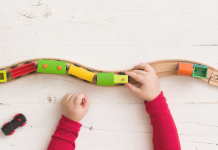As a classroom teacher of 23 amazing second graders, I watched from afar as my international teaching friends became confined to their homes. They began teaching online, while their students were learning at home. I saw first-hand their reactions to news. I will (honestly and ashamedly) admit that I initially thought, “This won’t happen to school here.” “Are people overreacting?” “Shutting down schools is crazy!” But, as the virus spread and appeared domestically, I began to really consider what impact this might have on our country and our communities.
After the initial shock set in, I witnessed something amazing. Instead of panic and upset, I saw an entire community come together and start building support for our students. Online companies, educational resources, school districts, libraries– everyone began bonding together and creating solutions. Our district, as with many, set up a program to distribute food to families in need throughout the closure. Teachers sent resources home. Online education companies offered subscriptions. Local businesses provided resources.
I began to let go of my panic and shock. I started considering what I could do to help. What can I, as a teacher, AND parent, offer to our community? So, I sat down to create some ideas for parents to help support students and facilitate learning at home.
Most Importantly: Stay Healthy

You cannot take care of yourself, your kids, or your family if you are not well, which will make learning at home impossible.
- Thorough hand-washing is the best way to prevent the spread of any virus.
- Avoid places where large groups gather. Malls, stores, movie theaters, libraries, museums, and playgrounds all are top of the list. This is known as social distancing. Trust me, I’m a VERY social person. I love kids, people, and being out and about in the community. But right now, I’m hunkered down as much as possible.
- Drink water and eat healthy. If you are in need of assistance with food, there are resources. Check with your school district and local food bank. Also, utilize pick up and grocery delivery options. This will help you avoid going into the store and being exposed.
- Consider your mental health. Take breaks. Make alone time. Journal. Enjoy things that you enjoy.
Keep Learning at Home

As a teacher mama, I will always advocate for learning at home. It’s imperative for your child to retain the information they have been learning. If you take the next month for rest and relaxation, but do not participate in educational learning with your child, you are missing an opportunity.
- Reading is the most important activity you can do with your child at home! Read aloud to your child. Have them read aloud to you. Play reading/word games. Cut words out from magazines and newspapers to create collages. You can also turn on closed captioning! This is a simple way to encourage reading and still allow your child to enjoy some of their favorite shows.
- Use online resources. MANY companies (Scholastic, Learning A-Z, Khan Academy, Commoncoresheets, BrainPop, Age of Learning) offer free resources, or have offered temporary free subscriptions. Comcast has even offered free internet for those in need of internet access.
- Build things. Working together, building with legos, blocks, paper, kits, etc. Building promotes teamwork, problem solving, and mathematical concepts (engineering, measurement, physics, etc.).
- Cook together. Use recipes to measure and create yummy meals. Fractions, measuring, and temperature are all part of mathematics.
- Write! Write stories with your child. Create books from your writing and encourage your children to read them to each other and themselves.
- Make lists. Lists are a fun way to encourage writing at home. Yesterday, my son and I made a list of chores he can do while we are on “break” from school.
Create a Schedule or Daily Routine

As a teacher, I think this is one area that parents greatly overlook. Trust me, kids THRIVE on routine and consistency. Without some sort of schedule, learning at home will be difficult. In addition to helping keep life stable for children, it will also help IMMENSELY when you and your child are preparing to return to school.
- Make a routine that works for you and your family. Things to include: meals, play time, learning time, quiet time, outside time (weather permitting), and bedtime.
- The most important part of a daily routine is SLEEP. A child’s body needs sleep to process the day, and turn short-term memories into long-term connections. Please set and maintain a consistent bedtime for your child. This is the simplest routine but you get the most bang for your buck! Returning to school will go more smoothly for all involved if you have a consistent sleep schedule.
- Schedules and routines do NOT have to be strict. They can be vague, as long as they are predictable. They also do not have to have set time lengths.
- Set boundaries. Again, children thrive on structure, routine, and clear expectations. I am not the teacher, or parent, to tell you what your boundaries should be. That is your decision, as a parent, for what works for you and your family. Every family is different. I would just encourage you to think about your boundaries and stick to the ones you set.
Want more resources on how to keep your kids thriving and learning at home? Check the link here.










